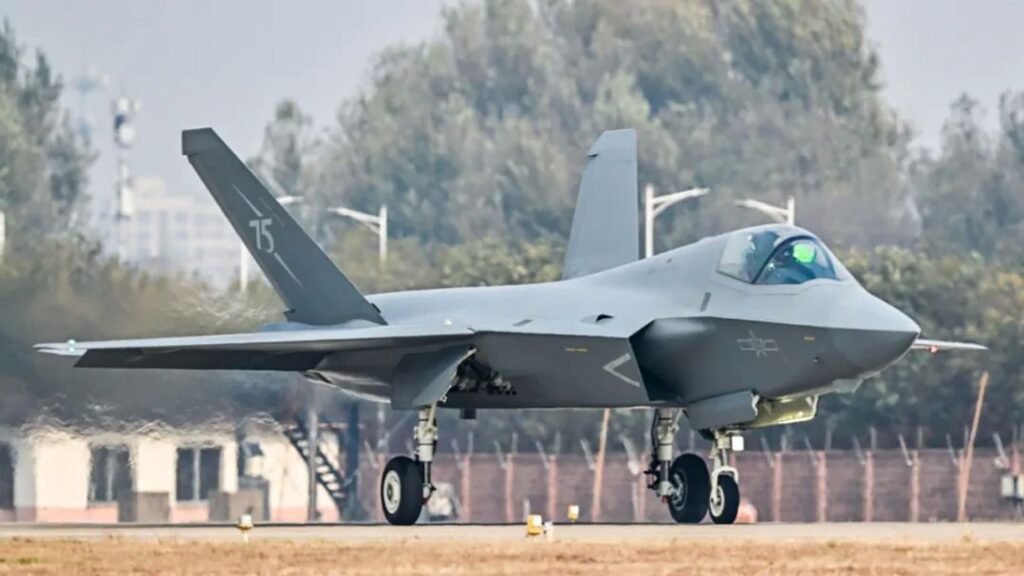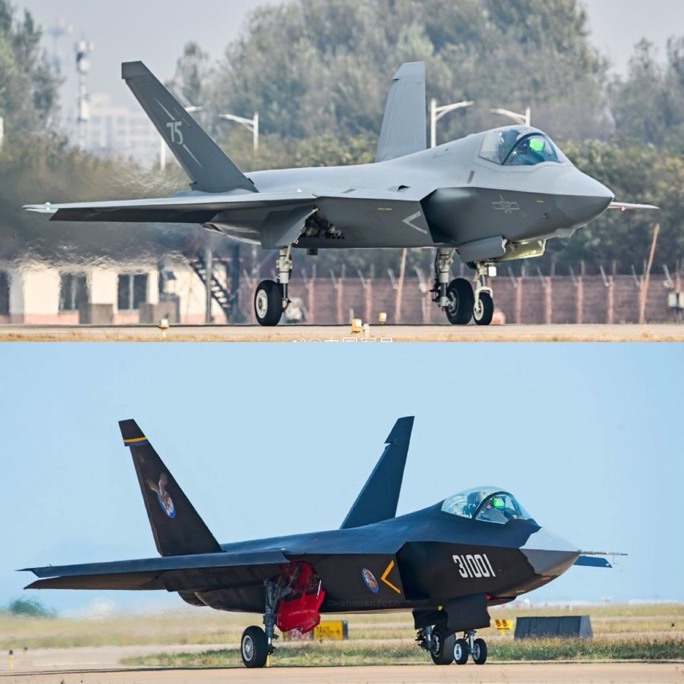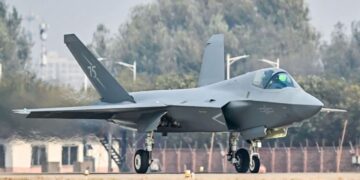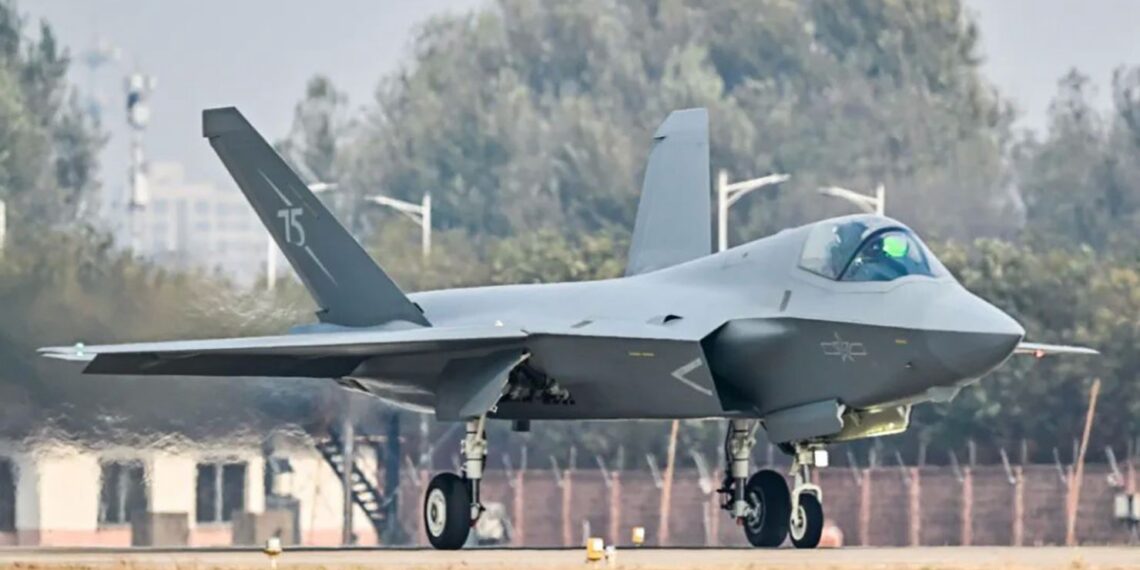China took a significant step in the race for aerial superiority by officially unveiling its latest 5th generation stealth fighter, the J-35A, at the Zhuhai Airshow. The J-35A, which has been in development for years under tight secrecy, represents a critical component in China’s ambitious military modernization efforts. This twin-engine, multi-role fighter jet has drawn comparisons to the U.S. F-35, with an emphasis on stealth, agility, and integrated technology aimed at enhancing China’s operational airpower. The Zhuhai debut signifies China’s intentions not only to advance its indigenous fighter technology but also to potentially compete in the global fighter jet market.

The Chinese People’s Liberation Army Air Force will officially debut its J-35A fighter jet next week.
Chen Yang/People’s Liberation Army

J-35A Stealth Fighter Jet Specifications and Capabilities
General Specifications
• Role: Multirole Stealth Fighter
• Generation: 5th Generation
• Manufacturer: Shenyang Aircraft Corporation (SAC)
• Length: Approx. 16.7 meters
• Wingspan: Approx. 11.5 meters
• Height: Approx. 4.5 meters
• Empty Weight: Estimated at 17,000 kg
• Maximum Takeoff Weight: 31,800 kg
• Engines: 2 x WS-13B afterburning turbofan engines (Chinese-built) or possible upgraded WS-19s
• Thrust: 100-110 kN per engine
• Range: Estimated 2,000+ km
• Top Speed: Mach 1.8
• Service Ceiling: 20,000 meters
• Crew: 1 (pilot)
Key Features
1. Stealth Design
• Advanced radar-absorbent material reduces radar cross-section.
• Faceted fuselage and blended wing-body design enhance stealth capability.
• Internal weapons bays to maintain low observability.
2. Avionics and Sensors
• Equipped with AESA (Active Electronically Scanned Array) radar for enhanced targeting and tracking capabilities.
• Advanced electronic warfare (EW) suite for jamming and countermeasure deployment.
• Integrated Infrared Search and Track (IRST) system to detect stealth threats without active radar use.
3. Combat Capability
• Armament: Capable of carrying a variety of air-to-air, air-to-ground, and anti-ship missiles.
• Internal Weapons Bay: Holds up to 4 medium-range missiles for air-to-air engagements.
• External Hardpoints: Additional points for payload in non-stealth mode, adding up to 8,000 kg of weapons.
• Missiles: Compatible with PL-15 (beyond-visual-range) and PL-10 (short-range) air-to-air missiles.
• Bombs: Can carry precision-guided munitions like the LS-6 glide bomb.
4. Maneuverability and Agility
• High thrust-to-weight ratio enables quick acceleration and vertical climb capabilities.
• Advanced fly-by-wire system for superior control during complex maneuvers.
• Optimized for high maneuverability in dogfight scenarios and sustained high-speed flight.
5. Enhanced Survivability
• Low-observable (stealth) design minimizes detection.
• Modern self-protection systems to evade missile threats, including laser warning receivers and countermeasure dispensers.
• EW suite aids in jamming hostile radar
communication systems.
6. Multirole Versatility
• Capable of both air superiority and ground attack missions.
• Designed to operate from land bases and potentially aircraft carriers, making it versatile across different combat scenarios.
• Increased range allows for extended reach into contested areas in the Indo-Pacific region.
Potential Operational Role
The J-35A is expected to serve as a cornerstone of China’s air superiority strategy, providing a stealth option against well-equipped adversaries in the Asia-Pacific. The jet’s multirole design and the potential for both carrier and land operations make it a flexible asset for the People’s Liberation Army Air Force (PLAAF) and Navy (PLAN). Analysts view the J-35A as a potential tool to project Chinese airpower within the “First Island Chain” and possibly beyond, countering U.S. and allied forces in key strategic locations.
Historical Background of the J-35A Development
• 2013: Initial concept and designs rumored to have emerged as part of China’s broader stealth program.
• 2018: Reports indicated increased investment and focus on indigenous stealth technology with accelerated development.
• 2021: Prototypes spotted in test flights, sparking interest and speculation about China’s progress.
• 2023: Final stages of development observed, with hints that the Zhuhai Airshow would host the official debut.
• November 2024: Official public reveal at Zhuhai, marking a milestone for Chinese aerospace technology.
Global Implications and Strategic Significance
The debut of the J-35A at Zhuhai is not just a testament to China’s technological advancements; it also signals Beijing’s intent to challenge U.S. air superiority in the Pacific. The J-35A, with its combination of stealth, maneuverability, and combat versatility, represents a formidable addition to China’s military capabilities. The fighter’s specifications and capabilities have drawn global attention, with analysts suggesting that it could prompt increased arms competition and advanced fighter development in neighboring countries. Given its estimated low production cost relative to Western counterparts, the J-35A may also become a popular export item for China, targeting countries looking for advanced but affordable fighter jets.














